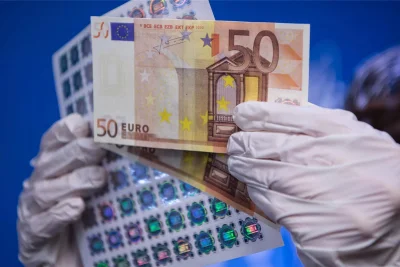How Do You Explain Trustworthy Counterfeit Money Sellers To A Five-Year-Old

The Intricacies of Counterfeit Currency: Understanding Quality and Legal Implications
While the term "counterfeit money" typically conjures pictures of criminal activity and suspicious transactions, the reality is that the production and circulation of counterfeit currency encompass a variety of motivations and effects that can be as complex as they are prohibited. The introduction of digital resources and technologies has actually made discussions on counterfeit money more prevalent, leading individuals to check out different aspects of this underground world. Comprehending the subtleties of premium counterfeit money, and the possible ramifications of engaging with it, is vital for anybody thinking about the subject.
Defining Counterfeit Currency
Counterfeit currency describes bills or coins produced with the intent to trick, designed to simulate genuine currency provided by a federal government or reserve bank. Quality is typically evaluated based on numerous factors, consisting of:
Materials Used: High-quality counterfeit notes may use similar paper, ink, and security functions discovered in authentic currency.
Information and Design: A concentrate on replicating fine details, such as watermarks or holograms, is important for creating credible fakes.
Printing Techniques: Sophisticated techniques, frequently using commercial-grade printing devices, enable the production of convincing replicas.
The Economics of Counterfeiting
The factors individuals or groups participate in counterfeiting can be differed, but typically consist of the list below factors:
Earnings Motive: Counterfeiters typically run in the shadows to maximize their earnings through the circulation of fake currency.
Availability: The schedule of advanced printing innovations has made it easier for counterfeiters to produce top quality notes.
Demand: The undercurrent of demand for counterfeit money exists due to the bargaining power it may afford to some people or organizations.
Nevertheless, participating in the production or distribution of counterfeit currency is illegal, with serious legal consequences.
Legal Implications
Diving into the world of counterfeit money brings with it severe legal consequences, including:
Crook Charges: In lots of jurisdictions, producing or distributing counterfeit currency is a felony. Convictions may lead to prolonged prison sentences and significant fines.
Civil Liability: Beyond criminal charges, individuals may discover themselves facing civil suits from those harmed by the flow of counterfeit notes.
Police Investigation: Engaging with counterfeit currency often attracts the attention of law enforcement firms, resulting in investigations and prospective arrests.
This legal framework emphasizes that the appeal of counterfeit currency is filled with risk.
The Quality Factor: What to Look For
High-quality counterfeit currency can be difficult to differentiate from the real thing, especially as innovation continues to advance. Here are some key signs that individuals often search for when evaluating the quality of counterfeit notes (although one should remember that possession or circulation of counterfeit currency is illegal):.
Paper Quality: Genuine currency utilizes a specific kind of paper that contains a specific ratio of cotton and linen, making it more resilient than regular paper.
Color Shifting Ink: Many genuine banknotes feature color-shifting ink that changes color when viewed from various angles. High-quality counterfeits may reproduce this function, though badly.
Watermarks: Most currencies include watermarks that show up when held up to light. Counterfeit reproductions may fall short in imitating this hallmark.
Security Threads: Genuine currency has embedded security threads that can be detected by touch; quality fakes may not duplicate this function accurately.
Microprinting: The usage of microprinting (little text that appears fuzzy to the naked eye) is another typically inadequately replicated feature.
The Risks of Counterfeiting.
Engaging with counterfeit money exceeds legal implications; there are significant risks involved, including:.
Financial Loss: Even if one successfully obtains counterfeit currency, there is always the risk of getting captured, causing financial loss alongside legal issues.
Social Consequences: Being involved in illegal activities can tarnish one's reputation and relationships, both individual and professional.
Increased Law Enforcement Scrutiny: Buying or offering counterfeit money ignites the interest of police, potentially causing examinations that put people at higher risk.
FAQs.
1. Is it unlawful to own counterfeit money?
Yes, possessing counterfeit money is illegal, and individuals might deal with criminal charges for just holding or trying to use such currency.
2. What should I do if I inadvertently receive counterfeit currency?
If you believe that you have received counterfeit money, do not try to invest it. Instead, report falschgeld kaufen sicher to your local authorities or the banks where you received the counterfeit note.
3. Exist genuine uses for counterfeit currency?
No. There are no genuine usages for counterfeit currency. However, some people may create props for instructional, artistic, or film functions and can acquire unique authorization for this under particular laws.

4. How can I protect myself from counterfeit currency?
Stay Informed: Familiarize yourself with the features of legitimate currency.
Usage Anti-Counterfeit Tools: Tools such as UV light detectors can help recognize counterfeit notes.
Beware in Transactions: Be careful of accepting money in scenarios that feel doubtful, and make transactions in reputable environments.
Conclusion.
The world of counterfeit currency is rife with risk, legal repercussions, and ethical predicaments. While the appeal of high-quality counterfeit notes might be intriguing to some, it is essential to keep in mind the legal and social consequences that accompany involvement in such activities. Instead of browsing the dirty waters of counterfeit money, individuals are motivated to seek legitimate opportunities for monetary transactions, concentrating on stability and legality in their economic pursuits.
